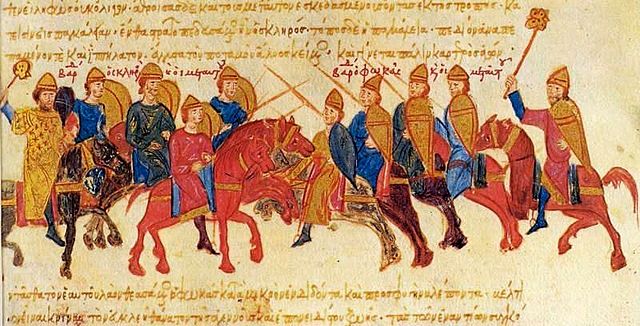Phokas (Byzantine family)
Phokas or Phocas (Latinized), feminine form Phokaina or Phocaena, was the name of a Byzantine aristocratic clan from Cappadocia, which in the 9th and 10th centuries provided a series of high-ranking generals and an emperor, Nikephoros II Phokas. Its members and their clients monopolized the high-command positions of the Byzantine army for much of the 10th century and led the successful Byzantine offensive against the Arabs in the East. As one of the leading families of the Anatolian military aristocracy, the Phokades were also involved in a series of rebellions that laid claim to power and challenged the emperors at Constantinople. Their power was eventually broken by Basil II, and the family declined in importance after the 11th century.
The blinding of Leo Phokas
Entry of Nikephoros Phokas (r. 963–969) into Constantinople as emperor, from the Madrid Skylitzes
Battle between the armies of Bardas Skleros and Bardas Phokas, from the Madrid Skylitzes
Nikephoros II Phokas, Latinized Nicephorus II Phocas, was Byzantine emperor from 963 to 969. His career, not uniformly successful in matters of statecraft or of war, nonetheless greatly contributed to the resurgence of the Byzantine Empire during the 10th century. In the east, Nikephoros completed the conquest of Cilicia and retook the islands of Crete and Cyprus, opening the path for subsequent Byzantine incursions reaching as far as Upper Mesopotamia and the Levant; these campaigns earned him the sobriquet "pale death of the Saracens".
Nikephoros II Phokas on a 15th-century manuscript, Biblioteca Marciana, Venice
Icon of St. Nikephoros by Theophanes the Cretan
Nikephoros' entry into Constantinople as Emperor through the Golden Gate in summer 963
Tarsus surrenders to Nikephoros Phokas (seated).





